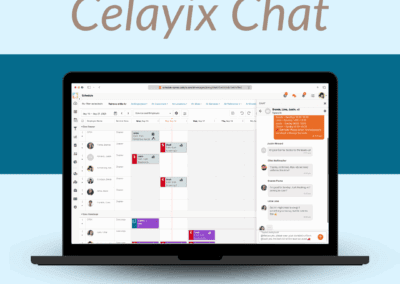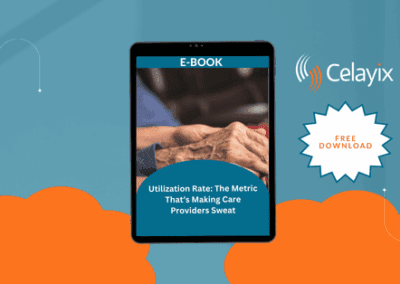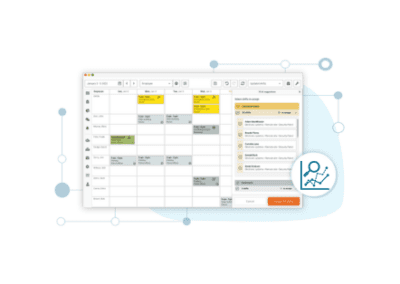Employee incentives are a big player in retaining your employees. Looking back at 2023, the average rate of voluntary turnover due to employee resignation (17.3%) was much higher than the rate of involuntary turnover (4.8%), where the company terminated the employee. The numbers are decreasing from 2022 and previous years, but employers want to see them go down even more.
Employees have higher expectations from their companies and expect flexibility with their working arrangements. For example, working from home options and flexible schedules. Companies need to step up and offer employee incentives in order to reduce turnover and retain their best talent.
Did you know on average, the average cost per new hire in the US is approximately $4,700? After spending this money, you need to ensure you are doing all you can to retain them. This is where employee incentives come into play.
In this blog post, we discuss some top employee incentives that will help you to retain your staff!
What are Employee Incentives?

While your employees should always be the driver for these incentives, it’s important to note that organizations can greatly benefit from offering them. Not only will they help to reduce turnover, they can also drive employee engagement and boost productivity overall!
Employee incentives to reduce turnover rate
So, how can you effectively implement employee incentive ideas at your organization in order to keep turnover low, and retention high?
Salary and employee benefits:
Everyone knows how important salary is in recruiting new employees. Salaries need to be competitive and cover employees’ living expenses, food, and all other basic needs. The amount you pay employees will differ depending on the industry and the kind of work they are doing.
However, you will need to comply with the minimum wage standard of where you are located. Take into account what other companies within your industry pay staff for the same amount of work to remain competitive.
When it comes to reducing your employee turnover rate, you also have to offer regular salary reviews and increases. For most employees, responsibilities and roles grow over time, and their salary should reflect that too! If your organization simply can’t afford salary increases at any point, it’s important to be open and transparent with them about that.
If this is the case, you should avoid giving bonuses/salary increases to executives. The goal is a fair and level playing field for all employees.
Similarly, benefits are also hugely important to reduce the turnover rate of your workforce. Companies with over 50 employees are required by the U.S, the Patient Protection and Affordable Care Act of 2010 to provide workers with health insurance. Health insurance is a really popular incentive that a lot of employees expect from their workplaces.
Lately, benefits have grown to include wellness options such as gym memberships or wellness stipends. With that in mind, by not having a strong benefits plan you are putting your company at a disadvantage in hiring and retaining good workers.
Flexibility:

It can also look like being able to choose their own shifts through self-scheduling or shift bidding. If your industry is suitable, remote work is a GREAT incentive for new hires as well as retention.
If workers feel the workplace is too rigid with not enough flexibility, they will more than likely look for opportunities elsewhere. Employees who are given ample flexibility are 4 times less likely to become a retention risk.
Employers often think of flexibility as a lack of control over their employees. However, there are ways to increase flexibility without sacrificing control. As we mentioned above, the schedule is a great place to start. Offer flexible scheduling options, or consider a 4 day week where employees can work the same amount of hours over fewer days.
If you put your mind to it, you’ll find a solution that works for everyone.
Career Progression:
If an employee doesn’t see a clear path for advancement in their career, they may feel unmotivated and less productive. This can eventually lead to them leaving the company. Just like with salary reviews, career advancement is important for employee satisfaction and retention. Your best employees are those who want to move up the career ladder and get promoted.
This means you have an ambitious and motivated workforce. However, not giving them opportunities for growth means you are not letting your employees live up to their full potential. Make sure to inform your current employees about any job openings that you believe they would be a good match for. They will appreciate that you are recognizing them for a role and are more likely to stay with your organization for a longer period of time.
Employee Recognition:

This can be through 1:1 feedback in meetings or by sharing key milestones with the rest of the company. Let your team know that you value their hard work. You can even offer an incentive such as employee recognition awards where employees can vote for other team members and win a prize.
Depending on what type of work you do, you can use employee recognition programs to help improve sales and productivity. Track cross-selling efforts or productivity levels and recognize the high performers in those areas!
Monetary incentives
Monetary rewards and incentives are really motivational for a lot of employees. In most cases, this comes in the form of bonuses or shares in the company. Over the last couple of years, retention bonuses have been used to reward employees as an incentive to keep them in the business for a longer period of time.
It is usually a once-off payment or gift card aimed to keep employees from leaving their position. With the rise of competition in the marketplace, this type of bonus is becoming more common.
Again, cash bonuses may not be an option but the same principle applies to years-of-service incentives. For example, you might offer extra days annual leave in relation to how long an employee has worked with your company. Over recent years, employees have been placing more value on work-life balance and time off than money – so keep that in mind!
Provide educational opportunities
The key to low employee turnover is high engagement. When employees have been in a role for a long period of time, they often get bored and become disengaged. Disengaged employees will eventually look elsewhere for a position that interests them. Your brightest employees will be interested in challenging themselves and growing.
You should encourage your employees to learn and upskill at every opportunity.
This is why educational opportunities are a great employee incentive to retain your workers. Investing in training and workplace education courses shows you care about your workers and want them to learn and develop their skills.
“Employees are far more likely to make a long-term investment in the company if the company makes one in them.”
Toptal.com
This is another employee incentive that benefits both you and your employees. Your employee learns new skills and qualifications. Your workforce becomes more skilled and qualified to improve the quality of their work.
Time off 
It is imperative to provide adequate time off in the form of vacation days and sick leave to your employees. Without breaks in work, employees can feel overworked leading to workplace stress and eventually burnout. This is not good for your employees or your business so ensure they are getting days off to rest and recuperate.
Some companies even offer additional vacation days as incentives if an employee reaches a certain target or deadline. It engages workers and motivates them to meet their goals when they know they are getting rewarded for it.
Invest in workforce management software
Outside of employee incentives, there are tools you can use to improve your employee retention. These tools are often a way for you to offer some of the incentives we’ve mentioned above!
Implementing workforce management software is a great way to help your employee retention and engagement. Software such as Celayix frees up your managers’ time and resources so they spend less time on scheduling and tracking employees and more time on the important stuff! They can spend more time 1:1 with employees, offering feedback and seeking opportunities to incentivise loyalty.
Employees also benefit from the Celayix mobile app which provides flexibility and autonomy with their work. You can offer self scheduling and shift bidding, and allow employees to input their availability to work shifts. This autonomy is a great driver for retention. If you’d like to find out more about how Celayix can help you offer greater employee incentives, talk to a solutions advisor today!





